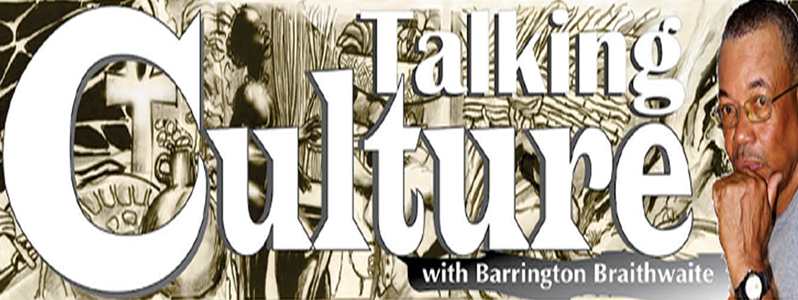If you do, it will prevent ‘eye-pass’ Part Two
THE three articles that compose the above subject, with this being the second, are written to condense the crucial aspects of our history that are immediately relevant to where we are today. The books that capture these narratives are identified, for Guyana is saturated with plagiarism and falsifications, apart from arrogant speculations and presumptions, across group borders. The colony of British Guiana post-emancipation (after 1834) was a stage of conflict between the African group of all shades (Creoles) and the government that constituted the Euro-planters and merchants. The indentured groups were neither citizens nor subjects of the crown in the colony context; they were immigrants, except for the Portuguese who were extracted (and as indicated there were sound reasons for that, they were not surviving the physical estate challenge) and promoted as a buffer between the Euro plantocracy and the ambitions of the Creole.
To every ready opportunity that constitutes the replacement of another group economically and socially by trickery, by force or a philosophy of favouritism by whatever criteria will have retaliatory consequences. We concluded last Sunday with tax laws instituted by the Colonial authorities that were composed by former plantation owners and the colonial authorities designated from England that needed their support for the considered smooth administration of the colony, who complied with the destabilising plan for the emancipated African Creole. Culturally though the Creole was imposed upon by the overlord European norms, levels of African taste were incorporated, regardless- inseparable were the styles of the head wrap, an ancestral feature still alive today throughout New world Afro societies.
The main interaction and cultural and economic conflict waged in post-emancipation British Guiana was between the values and manipulations of justice of the Euro-colonial overlords and the manumitted Africans and other Africans conveniently referred to as coloured in the vast scheme of divide and rule. It must be noted as indicated by Brian L. Moore- CULTURAL POWER RESISTANCE AND PLURALISM “Very strikingly, though, the documentary evidence does not reveal any food items in the Creole diet borrowed from the 19th-century immigrant groups –Portuguese, Indian or Chinese which did become favourites among the Creoles later on. – Food however, was one area of their cultural matrix through which the Creoles, as we have seen, significantly influenced the colonial elites.” The tax plot was a sinister initiative that related as follows-”The rationale was simple: the more taxes the Creoles had to pay on basic consumer products, the more money they would need to earn; and as the village economy proved increasingly incapable of providing them with sufficient income to meet their basic needs they would have to turn to plantation labour. Thus, from the very first tax ordinance after Emancipation until the end of the century, consumer goods were heavily taxed-wheat flour, cornmeal, codfish, beef, pork, rice, salt, lard, soap, candles, cloth, fabrics, hardware, confectionery, tobacco, wines, beer, etc. Generally speaking over 90 per cent of the total revenue was raised by taxes on consumer goods. By contrast, plantation supplies such as bricks, machinery, manures, lime, hay, staves, steam engines and ploughs etc, were exempt from taxation.” Brian L. Moore-THEMES IN
AFRICAN-GUYANESE HISTORY.
Thus with Independence P.M Forbes Burnham insisted on the return to the reliance on culinary tastes in-keeping with homegrown produce ‘grow your own food’. But this alone was not the completion of the undermining of the independence of the liberated population; we again turn to Brian L. Moore-THEMES IN AFRICAN- GUYANESE HISTORY –“Taxation also took the form of licences which were required for portering, huckstering and shopkeeping, as well as for boats, cabs and mule and donkey carts operated by the working people for hire. Once again, the boats, horses, mules and carts operated by plantations were exempt from taxation. More sinisterly, however, the huckster and shop licences were calculated to hinder the Creoles from engaging profitably in the lucrative retail trade to accumulate wealth and thus become relatively independent of the plantation sector. Successive Governors recognised that these licences discriminated against the Creoles in favour of the Portuguese, but did very little about them since the planters and merchants controlled the combined court.”

This process of planter plotting to reverse the emancipated African to plantation dependency using the Portuguese as a preferred counter to his independence did not escape the awareness of the Creole. Portuguese rise in the merchant trade also aroused anxieties from the English merchants and planters; they had used the ploy of the planters effectively to their uses. “In some areas the Portuguese shopkeepers were even acting as bankers for the East Indians on the sugar estates. This evidence was decried by the government which urged the East Indians to use the Savings Banks. The Portuguese were in much disfavour with the authorities and it must be noted that, to a great extent they had brought much of it on their own heads through their practices of defrauding their customers. They were consequently fined very heavily for using false weights and measures, the courts contending that their profits were large enough to cover both fines and costs. It was a see-saw situation: on one hand the ubiquitous shops allowed the poor man with a few pennies to purchase bread, salt fish, salt beef, pork, plantains among other items, while at the same time cheating other customers who could afford to pay. Whatever favouritism the government had shown previously to the Portuguese had now waned.” Mary Noel Menezes, R.S.M-THE PORTUGUESE OF GUYANA A STUDY IN CULTURE AND CONFLICT.
It was the Angel Gabriel-James Sayers Orr’s crusade against the Catholic Church; the Portuguese were the backbone of Catholicism in the colony at that time and they existed as was evident as a preferred group by the government that were strangling Creole business efforts with support from the colonial authorities; in the 1850’s onward the Creoles petitioned for constitutional reform, but failed, the principal contention of the riots against the Portuguese across the counties, New Amsterdam, West Coast Berbice, East Bank Demerara, and the largest riots occurred in Georgetown in 1856 under the trumpet and oratory of the Angel Gabriel under the slogan of “They are taking bread out of our mouths.” During this period of the other indentured groups – the East Indians were in the majority held within the boundary of the plantation estate, forbidden to interact with the Creole villages. The Chinese were not inclined to the same indentured values as the East Indians and drifted into the townships as soon as their indentures were completed, others were encouraged to stay. ”A Christian preacher started a settlement called Hopetown on the Kumuni Creek up the Demerara River.” David A. Granger –THE VILLAGE MOVEMENT.
Africans who came as Indentured labour became part of the steaming population of port Georgetown and some settled in the Canal belt on the West Bank of Demerara. The Chinese however had previously introduced another dimension, Brian L Moore-CULTURAL POWER RESISTANCE AND PLURALISM-“In Guyana the Chinese immigrants were known to organise themselves in criminal gangs during the 1850’s and 60’s and engaged in armed robbery (essential praedial larceny) perhaps to supplement their meagre rations while indentured on the plantations, these bands of Chinese workers armed with cutlasses fastened to long sticks roamed the countryside at night, both on the plantations themselves and in the neighbouring villages, ravaging stockyards and provision grounds. Numbering in some cases between twenty and fifty, these marauding gangs terrorized plantation watchmen and villagers by the viciousness of their attacks in which several persons were killed. This in fact forced the plantations in 1861 to arm their watchmen.”
The conclusion for this series will come next week.




.png)









